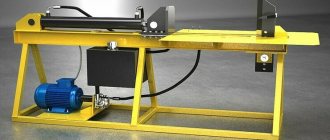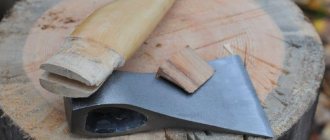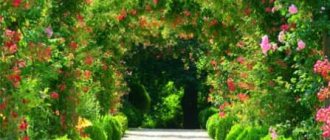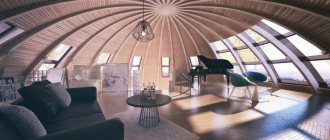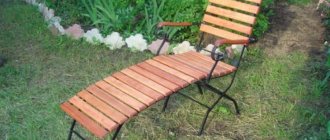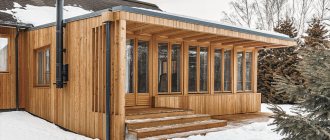In the last few years, many have been making gabions with their own hands, using step-by-step instructions from specialists, as these structures are becoming increasingly popular as elements of landscape design. Meanwhile, gabions, which are three-dimensional structures made of metal mesh, the inside of which is filled with stone, crushed stone or pebbles, have been used for a long time. Initially, they were used to strengthen river beds, hillsides and ravines, and create military structures. Along with high strength and stability, such structures, consisting of stones placed in a metal mesh, are exceptionally decorative. Landscape designers paid attention to this and began to create various elements from gabions for the design of personal plots.
Gabion fence
Valuable qualities of bulk structures
Gabion structures have many advantages:
- they are easy to erect and just as easy to dismantle;
- can be disassembled and moved to a new location if necessary;
- look aesthetically pleasing and are widely used for decorative purposes;
- They are very strong, durable, successfully perform their protective functions during landslides and floods, and also reliably hide the territory from prying eyes if the structure is high enough. At the same time, the structures are breathable;
- You can easily hide garden hoses and pipes between the stones and lay wiring;
- environmentally friendly - this is one of the important qualities of gabions. Such structures do not harm the environment.
Even after the mesh collapses, the retaining structures will retain their shape for an additional 90 years.
Installation of geotextile tubes
Geotextile tubes are special containers that, if necessary, can be of any size (length, width, circumference), made from high-strength polypropylene geotextiles. The special weaving of geotextiles forms pores that allow water to pass in only one direction - to the outside of the geotextile tube, thereby ensuring that solid particles of pre-filled soil or sand are retained inside the container. The use of geotextile tubes makes it possible to stop the processes of coastal erosion and protect the territory from the destructive effects of floods, even in hard-to-reach places where other technologies for protecting and strengthening the coast may not be effective.
Properties of welded mesh for gabions
Durability, reliability and environmental friendliness - all these qualities will be present in your gabion if you choose the right source material. A simple chain-link mesh is suitable for a gabion only if you do not expect special durability from it and plan only decorative functions.
Often, a special metal welded mesh (galvanized) is used for gabions. For durability, it is ideal to use a steel wire mesh, which is additionally coated with galfan and a polymer composition.
The service life of such material exceeds 100 years. During this time, the mesh is not affected by corrosion or other natural factors. The polymer-coated mesh does not create an aggressive environment around itself. It is completely environmentally friendly.
Over time, such a gabion will gain even greater strength due to shrinkage and the mutual penetration of particles of its filler and the surrounding natural environment.
What it is
Example of flowerbed design
Gabions are three-dimensional frame structures with a clear geometric shape, made of metal mesh or reinforcement, filled with various fillers. The name “gabbia” itself is translated from Italian as “cage”. There are several types of structures, each of which uses its own construction technique.
The main component of the gabion group, on which its stability, strength, and also appearance depend, is the filler. What materials can act as it?
- Crushed stone
- Slate
- Granite
- Broken brick
- Cobblestone
- Basalt
- Sandstone
- Pebbles
- Wooden logs
- Metal scraps, pieces of pipes
- Roof tiles
- Flower pots
- Metal cans
- Plastic bottles and boxes
- Colored glass pebbles
- Artificial stone, etc.
This hedge looks natural and impressive
Please note that the lighter the filler, the stronger the cage should be
The material is selected according to color, type, size, and it is important that the filler unit is 60% larger than the size of the frame cell. The metal mesh from which the walls of the structure are made must be made using the double torsion method, coated with an anti-corrosion compound, and have a thickness of not 4 mm
Cells can be square, rectangular, hexagon shaped
The metal mesh from which the walls of the structure are made must be made using the double torsion method, coated with an anti-corrosion compound, and have a thickness of not 4 mm. Cells can be square, rectangular, hexagon shaped
The material is selected according to color, type, size, and it is important that the filler unit is 60% larger than the size of the frame cell. The metal mesh from which the walls of the structure are made must be made using the double torsion method, coated with an anti-corrosion compound, and have a thickness of not 4 mm
Cells can be square, rectangular, hexagon-shaped.
To make the structure stable and rigid, a frame made of reinforcement is placed inside before laying the filler. This is mandatory if you are installing a high fence, a strengthening structure or a decorative garden element of complex geometric shape. Keep in mind that over time, shrinkage and compaction of the masonry will occur, so without a rigid base, the gabion may begin to collapse or bend.
By the way, if you are fixing a stream bed or river bank using a three-dimensional mesh, you don’t have to install the frame, but make sure that the water doesn’t wash the stone through the cells, so their size should be twice as large.
How to make a beautiful and inexpensive fence at your dacha with your own hands: from wood, metal and polycarbonate | (70+ Photos & Videos) + Reviews
Singapore. Swimming pool on the roof. A selection of CREEPY photos
Below we have posted 4 photos of a hotel rooftop pool in Singapore. This is the largest known swimming pool in the world, which is located on a large platform, which in turn lies on three skyscrapers at once. What a scope!
There are palm trees on the roof, there are hammocks, and there is room for several thousand people. I wish I could swim there!
See the entire selection of photos in the gallery below.
Form creation technologies
Before making a block with your own hands, it would be a good idea to watch the installation video or read the instructions.
The methodology for forming the general structure includes 2 types of design:
- Frame. Gabions are made of a mesh with constant cells in the form of regular hexahedrons. The network is fixed in a frame made of alloy.
- Welded joints. Wire or metal rods are woven and welded together to form a box or cylinder (depending on the system).
Welded systems are more durable, since welding makes it possible to connect the rods and keep them in this state, despite the very significant tension of the plastic stones. In addition, welded gabions look the most attractive, and unlike frames, they can be wrapped into original shapes or flower beds. For this reason, they are used most often in landscape design.
Tools required for work:
- Galvanized wire mesh. For small systems, a wire thickness of 2-3 mm is sufficient. The larger the composition, the thicker the mesh, up to 5-6 millimeters. As a rule, a special mesh with hexagonal cells or an ordinary mesh with rectangular cells is used. You can try making a gabion from mesh, but this system will not last long, since the slab is not designed for heavy loads.
- Clips for fastening the frame. They must certainly be galvanized, otherwise the mounting points will rust over time and the box will fall apart.
- Sand, geotextile or thick film for the substrate.
- Filler - stones, pebbles, damaged brick. The larger the element in the mesh, the larger the filler.
- Reinforcement is used to strengthen large systems; it is not used for small configurations.
- Tape measure, pliers, shovel.
When producing gabions, in addition to the mesh itself, a so-called binding wire is required, which is used to fix the mesh in the frame, as well as to connect its walls with each other. For this reason, in addition to the right column, another parameter is presented that is not included in the specified GOST. This is the suggested wire diameter that will be associated with the gabion structure.
Step-by-step instructions for installing a gabion:
- The gabion is supplied disassembled in the box - you need to take it out and place it on a flat surface.
- All components are bent along the line and fixed with the support of the stapler and binding wire.
- All side planes rise to form a box. The upper part of each corner is connected to a wire that is attached to the frame. It should not move away from the edges, otherwise it will interfere with the installation of the system.
- After collecting the gabion box, they should be combined in pairs as shown in the picture.
- After this, the gabions combined in pairs are placed in the desired position according to the design and filled.
The main requirement is that the stones lie as close as possible. Deflection of the iron mesh is unacceptable - this is the most common mistake, due to which the system loses its own strength. Then the box lid is covered and secured with a stapler and binding wire.
Advantages of gabion structures
In order to make sure that gabions really deserve attention and can be used to decorate a site, you should understand the main advantages that are typical for this type of structure.
- Gabions are very easy to make. There is no need to use complex construction equipment, additional people or tools. Although this question largely depends on the dimensions of the structure.
- Gabions do not require any special care or maintenance throughout their entire service life.
- The structure has a high degree of reliability and durability, which is achieved through the use of high-quality materials in the manufacture of gabions.
- The use of such structures, compared to many other landscape structures, allows for significant savings on material and labor resources.
- If you follow the rules for the manufacture of gabion structures, and also use high-quality material, they will have an extremely long service life - up to a hundred years inclusive. Moreover, they never lose their attractiveness and neat aesthetic appearance.
- The absence of any clear standards regarding the shapes and sizes of the structure, which makes it possible to create structures of completely different shapes, dimensions and areas of application.
- Despite the fact that they are most often used as barrier structures, gabions have excellent air and water permeability. Thanks to this, the maximum effect of environmental friendliness of the constructed structures is achieved. That is, the buildings in no way have a negative impact on the vegetation growing on the site, and due to the excellent air permeability, normal growth of greenery is ensured.
- The internal part of the structure is not fixed in any way and remains in a free state, so the likelihood of an increase in hydrostatic pressure is minimized.
- It is easy to assemble. Therefore, even one person can create gabions and erect a landscape structure.
- The material used for laying in sections of the structure does not react in any way to soil subsidence. If this happens, then the stones only slightly change their position, and the structure changes its shape, while the integrity of the structure remains the same.
- Grass and other vegetation grow well through the structure, which gives it uniqueness and strength without compromising its quality characteristics.
- As a filler for metal boxes, you can use completely different materials of unusual colors and shades, and if necessary, they can be replaced. This allows you to create just such a composition that will harmoniously fit into the overall design of any site.
Gabion structures act as a drainage system and support at the same time, which allows you to protect the soil from wear and mechanical damage for a long time.
Materials for filling boxes
When choosing a stone to fill the mesh, you should be guided by the following requirements.
- Dimensions. The size of the debris should be no less than twice and no more than five times the size of the grid cell. Stones that are too small will fall out, and stones that are too large will leave a lot of empty space. So, for a mesh with 30 mm cells, you need to take stones no smaller than 60 and no larger than 150 mm in size.
- Water resistance. As a filler, you need hard rocks - granite, limestone, sandstone, quartzite, basalt, etc. You can take coarse crushed stone or rounded pebbles. Fragments of gypsum are not suitable, since in the rain they will get wet and float, forming an ugly whitish puddle under the box.
- Stone color. It all depends on your preferences. Many people choose a plain stone - for example, gray granite or yellowish sandstone. But you can also take multi-colored minerals to get a motley bright wall.
You don't have to limit yourself to stone. Other materials look no less impressive in gabions - fragments of ceramic tiles or red bricks, massive pieces of glass, wooden blocks, etc.
We decorate the cottage with gabions
If you want to make a pool with your own hands, pay attention to the following. Look at the beautiful frame made for it; such a body of water can become a pond in which the water will be much higher than the soil level
It’s nice to sit near such a pond on a hot day, having previously made a bench of the same type
Look at the beautiful frame made for it; such a body of water can become a pond with water much higher than the soil level. It’s nice to sit near such a pond on a hot day, having previously made a bench of the same type.
To make a gabion, you first need to clear the site, then mark it. You can draw a circle using a hose or a suitable shape. To make an edging for the pond, you will need to make two rings from metal mesh. To make the structure more durable, you need to make jumpers that will divide it into sections.
First, cut off the required amount of mesh to make the inner part. Connect the ends of this ring with wire and secure it to the ground with anchors. Now you need to cut out the bottom parts from the mesh and tie them with wire. After this, you need to attach separating diaphragms every 30 cm to the entire height, starting from the bottom. Immediately measure them so that they are the same, then the design will be even. Attach them. Now make a frame for the bench, as in the previous master class. Connect this semicircular and rectangular piece.
The pond container will be made of polymer. To prevent its walls from rubbing when touching the wire and metal mesh, a batting backing was first placed between two layers of material and attached to the metal walls with clothespins.
Place the stones down, after which you can insert the polymer circle inside. To fix its edges, they were turned outward and also attached with clothespins.
After this, you can lay the remaining stones. You need to put a mesh cover on top of the rectangular gabion and attach it. Install plank flooring on top. Now you can pour water inside and enjoy this hand-made decoration of your dacha.
When constructing such a pond, immediately think about how you will drain the water. The easiest way to do this is to make a hole at the bottom of the container and attach a plastic hose here. The connection point is isolated. And you will pour water through the top.
Also try decorating your dacha with figurines made according to the same principle. Make several blanks for the turtle and connect them with wire. Place stones inside. This kind of garden sculpture will then show off on your site.
By making gabions with your own hands, you can turn them into a set of country furniture.
As you can see, for the table you first need to make two rectangular bases that serve as legs. To ensure that they are well fixed, when installing these gabions, stick metal reinforcement into the ground, which will become a kind of fastener. Place a wooden tabletop on top. You need to make benches in the same way. Place pillows on top to make it more comfortable to sit.
Even gazebos and summer houses are built with the help of gabions. The combination of metal with stone and glass is a win-win.
Also, such gabions go well with water. You can make a real waterfall, and the streams will go into the soil. To do this, dig a ditch and place stones in it. Plant nearby plants that will enjoy being in this microclimate.
If you have accumulated some waterproof things at your dacha that could be thrown away, but you don’t want to part with them, then put it all in gabions. You will be able to look at these things and indulge in the pleasant memories that are associated with them.
Even empty glass bottles will be used. Place them on top of each other with their necks in one direction, filling out the pre-made form. If you then want to sit on such a bench, make sure that the wire cover is strong enough.
These stones go well with greenery, so you can plant thujas between wall fragments.
Show your imagination, you will make various sculptures using a metal base and stones. If you want to know in detail how to make them, then watch the video. The first one shows how to make a snail from stones.
The second story will show you how to make gabions for your dacha so that you have a unique landscape design.
You will find out what flower beds made of stones can be like by looking at the following photo selection.
Related article: How to organize a phytowall - a unique vertical flower bed
What is a gabion and what is it for?
The word "gabion" is of French origin and literally translates as "large cage". This is the name given to metal mesh, which is made from twisted wire. Typically, the shape of a gabion really resembles a cage, although you can make more shaped options that can be used to decorate the design of your site in an original way. Various stones are poured into the nets, which create an attractive, neat appearance for the fence.
In domestic terminology, in accordance with GOST R 51285-99, gabions are also called gabion mesh products (GSI). The requirements of regulatory documents require the use of metal cells that are a regular hexagon. However, completely different options can be used in landscape design, since GOST contains instructions for the use of products in the economic sphere.
Gabions are used in various fields:
- in the design of the site - as a fencing of the territory and figures;
protection of the coastal strip from erosion by water during flood periods;
strengthening the supports of bridges and other engineering structures to protect them from erosion by melt, sediment or groundwater;
gabions began to be used for military purposes back in the 18th century - they were used to protect gun batteries from bullets and shrapnel; In this regard, the qualities of the GSI are still used in local wars.
Thus, if initially gabions were used for purely practical, protective purposes, now they are becoming one of the modern design tools.
What advantages do gabions provide?
The reason for the popularity of gabions lies in the advantages that they provide in comparison with other stone products:
- Gabions are much cheaper than monolithic stone slabs and delivering them to the desired location is much easier.
- Gabions are easier to work with than slabs.
- Gabions allow you to show much more creative imagination, since the stone slab has a pre-prepared shape, and the mesh can be built of any size and type, adapted specifically to your site.
- Due to the fact that metal mesh bends very well, the gabion will naturally take the shape of the surface on which it is placed. As a result, even during the flood and rainy season, the structure will stand quite steadily without additional supports.
- The gabion itself is very durable: stones and metal practically do not deteriorate from moisture and temperature changes. In addition, there is no need to create a special drainage system for water drainage - as a result, time and money are saved during installation.
- Such structures are also undemanding in terms of maintenance - you just need to keep an eye on external cleanliness.
- Gabions, used as fencing, absorb noise well and retain dust from the road, which settles on the uneven, embossed surface of stones.
- Gabions can well strengthen the soil on a site if structures are laid out along its perimeter - stones are more reliable than textile fiber, sand and other drainage protect against erosion.
- Finally, a fence, support or figure made of gabion is a truly safe product from an environmental point of view: stone and metal do not pose any threat to health and do not pollute the site.
Thus, gabions are metal meshes that are filled with stones (sometimes with other available materials). You can assemble gabions with your own hands - the step-by-step instructions are quite simple.
The only disadvantage of these products is their fairly heavy weight. If small gabions can be removed manually, then for more capital options you need to carefully consider the placement location - moving them without damaging the mesh is almost impossible.
What types of tongues are used
By sheet pile we mean a special pile intended for the manufacture of sheet pile structures. The sheet piles are connected to each other using a special sheet piling lock. The main purpose of this hydraulic structure is to prevent ground movement during:
- construction/strengthening of dams;
- bank protection;
- occurrence of landslides;
- construction and so on.
Rice . The use of sheet piles in the construction of pits
The functional part of the tongue is divided into two main parts: the locking element and the main body. Sheet piling is produced from different materials:
- PVC plastic.
- Composite materials.
- Tree.
- Steel.
Among other things, these products differ in their appearance:
- Combined.
- Flat.
- Z-shaped profile.
- Pipe (form O).
- H-shaped beams.
- U-shaped troughs.
| Expert advice ! Reinforced concrete and wooden ones are used as disposable ones. Wooden ones deteriorate in the ground itself. Moreover, it is impossible to remove them without damage. Therefore I do not recommend their use. Driving reinforced concrete piles is an expensive and energy-intensive process. Moreover, their extraction is unprofitable. However, they can be used as a foundation and remain in the ground. |
As for metal tongues, they can be used up to 20 times. This is an ideal solution for the construction of temporary fencing. They are characterized by high load-bearing capacity. However, they are significantly inferior to PVC sheet piles under the negative influence of aggressive river water.
See also
Strengthening pit slopes with sheet piling
Sheet pile drilling
Gabions in landscape design: photo gallery with description
Along with the fact that gabions can be created with your own hands according to the step-by-step instructions provided, they can be used not only as fences, but also as full-fledged decorations on the site. The undoubted advantage of such structures is a combination of practicality (fencing, soil protection from erosion), durability and aesthetic appeal.
The use of these products in garden design is limited only by the user’s imagination, since there are a large number of options - from traditional to unusual. Here are some ideas and photos for inspiration.
Gabion fences
A fence made from such structures is a classic design that reliably protects the house and area from dust and noise. Such fences are created both from gabions themselves and in combination with wood materials.
Gabion fencing
From similar structures you can make small fences that organize the space inside the site. They will give the entire area a neater, more attractive look.
You can start with the fact that gabions are great for decorating an entrance area or terrace. If the house is located on a high enough hill, then the entire area next to the stairs can also be designed in the form of steps.
Gabions, therefore, can be used not only as a fence, but also as a basis for a wooden fence. Moreover, if the height is quite high (from half a meter), then it is better to further strengthen the structures with concrete columns and finish the top with wood or slabs.
Classic options are creating internal borders along the path. If you put basalt tiles or plywood on top, you get a full-fledged bench.
Gabion benches
Finally, such structures can be used to make full-fledged seats, as shown in the photo.
If you stylize the entire recreation area as a walking platform and add lighting, you get a rather interesting option.
Lights and wiring are laid directly into the stones during construction.
Benches are also created using wooden slabs.
It is interesting that such products even penetrate into the design of premises - if you want to diversify the furniture and interior of your apartment, you can try to start an experiment with gabions.
Gabion flower beds
The labyrinth design deserves special attention. This is a truly beautiful flower bed that can liven up a space. As a rule, they are located in the center or in the corners of the garden, maintaining symmetry.
An interesting option is portable structures that will serve as full-fledged flowerpots. Due to their originality, they will serve as a kind of calling card of the garden plot - directly above the stones you can place a layer of soil in which to plant flowers or ornamental plants.
To make these types of gabions with your own hands, you can use the technology given above in the step-by-step instructions, and take, for example, this drawing as a basis.
By modifying the shape, you can achieve designs of various types.
Gabion structures are a new direction in landscape design. They combine practicality, reliability and visual appeal. In addition, such products are cheaper than conventional fences due to the fact that all components (stones and mesh) are inexpensive. That is why gabions are becoming increasingly popular among owners of country houses.
And finally, a video selection of additional options for using gabions on the site.
Types of designs
There are three basic types of gabions:
- Box-shaped
- Mattress
- Cylindrical
Belonging to one type or another is determined by the shape of the structure and its functional purpose. Gabions can carry both an aesthetic and a useful load - or combine both options. The last requirement is best met by the box type.
Box gabions
This type is a parallelepiped, which is made of double twisted steel wire. The cells are made in the shape of a hexagon. The wire provides increased reliability and strength of the structure due to the uniform distribution of pressure over the mesh area. In addition, double torsion prevents further spreading of the mesh if it is torn.
Standard box sizes range from one and a half to 4 meters in length, from half a meter to a meter in height, and 1 meter in width. Mesh boxes longer than 2 meters are equipped with membranes located at a distance of a meter from the first wall and from each other. This increases the resistance of the facade to the pressure of the filler on it.
Boxes are also made by welding. In this case, the cells are square in shape, and the contact points of the rods are connected by welding.
Box-shaped gabions are used as retaining walls, to strengthen banks, design flower beds or build fences. They can also act as a foundation if heavy loads are not planned on them.
Assembly instructions:
Mattress gabions
Unlike the previous type, mattress (mattress-mattress) structures have a larger width - 2 meters, a length from 3 to 6 meters and a smaller height - from 17 to 30 cm. Diaphragm partitions are also installed inside the structures.
The low height of the grids allows you to follow all the curves of the landscape. In this regard, they are suitable for decorating slopes, strengthening the coastline, and can be laid on the bottom of canals or the slopes of ravines.
In addition, they can be used as a foundation for box gabions. This will distribute the load evenly and increase the stability of the structure. They are also used to terrace areas.
Frame
Selshio considered concreting the pillars inappropriate - why make a “float” that could be squeezed out by frost heaving. And considering that the groundwater level is below 6 m and the soil is loam, you don’t have to worry too much about heaving. Therefore, I made do with drilling holes 150 × 1000 mm, inserted a pipe into the hole, hammered it with a sledgehammer about another 0.5 m deep and sprinkled it with crushed limestone, fraction 20-40 mm, with layer-by-layer tamping.
After installing the pillars, I began assembling gabions - frames without a bottom and a cover, under the pillars instead of a bottom there is crushed stone bedding, under the crossbars there is just soil. I specially did a test backfill in the winter - nothing sank, why spend money on geotextiles or other base. He connected the cards together with staples using a special handicraft tool. The pillars are reinforced with ties (2 mm) - at intervals of 20 cm in a square post, a diamond shape is formed from the ties. There are mesh diaphragms in the crossbars every 60 cm.
I bent the “antennae” and hooked it onto the rod of the adjacent card, and additionally secured it with staples every 20-30 cm. I attached the lintels to the posts in the same way, with staples.
Since the lintels are 0.7 m longer than the cards, I added overlapping mesh overlays and connected them with staples.
I welded the logs after installing the posts and crossbars - if you don’t touch the galvanization, it won’t deteriorate.

